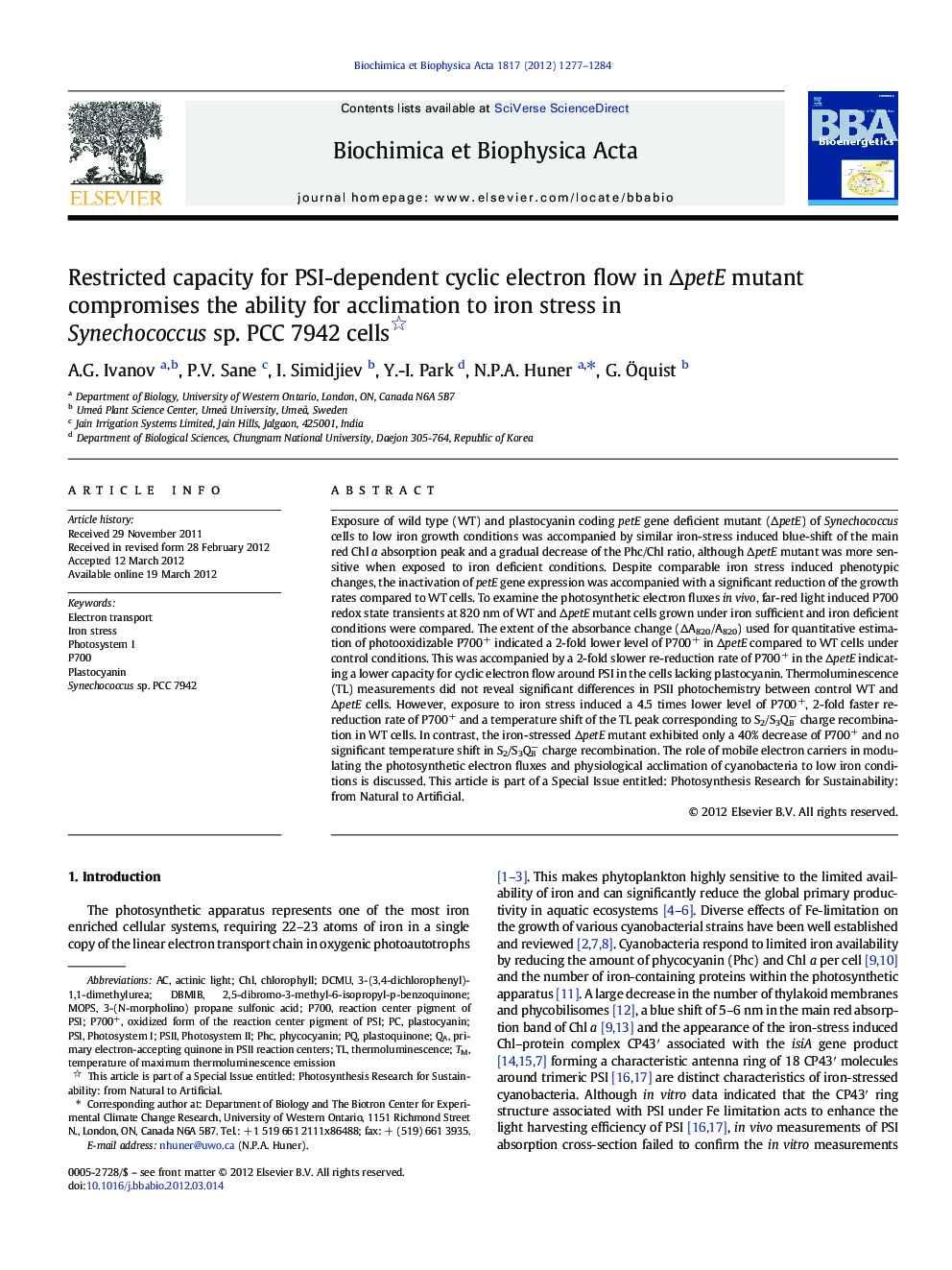| Article ID | Journal | Published Year | Pages | File Type |
|---|---|---|---|---|
| 1942399 | Biochimica et Biophysica Acta (BBA) - Bioenergetics | 2012 | 8 Pages |
Exposure of wild type (WT) and plastocyanin coding petE gene deficient mutant (ΔpetE) of Synechococcus cells to low iron growth conditions was accompanied by similar iron-stress induced blue-shift of the main red Chl a absorption peak and a gradual decrease of the Phc/Chl ratio, although ΔpetE mutant was more sensitive when exposed to iron deficient conditions. Despite comparable iron stress induced phenotypic changes, the inactivation of petE gene expression was accompanied with a significant reduction of the growth rates compared to WT cells. To examine the photosynthetic electron fluxes in vivo, far-red light induced P700 redox state transients at 820 nm of WT and ΔpetE mutant cells grown under iron sufficient and iron deficient conditions were compared. The extent of the absorbance change (ΔA820/A820) used for quantitative estimation of photooxidizable P700+ indicated a 2-fold lower level of P700+ in ΔpetE compared to WT cells under control conditions. This was accompanied by a 2-fold slower re-reduction rate of P700+ in the ΔpetE indicating a lower capacity for cyclic electron flow around PSI in the cells lacking plastocyanin. Thermoluminescence (TL) measurements did not reveal significant differences in PSII photochemistry between control WT and ΔpetE cells. However, exposure to iron stress induced a 4.5 times lower level of P700+, 2-fold faster re-reduction rate of P700+ and a temperature shift of the TL peak corresponding to S2/S3QB− charge recombination in WT cells. In contrast, the iron-stressed ΔpetE mutant exhibited only a 40% decrease of P700+ and no significant temperature shift in S2/S3QB− charge recombination. The role of mobile electron carriers in modulating the photosynthetic electron fluxes and physiological acclimation of cyanobacteria to low iron conditions is discussed. This article is part of a Special Issue entitled: Photosynthesis Research for Sustainability: from Natural to Artificial.
